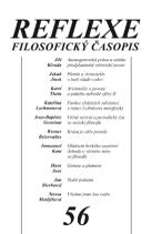Das Werk der Notwendigkeit in Platos Timaios
The paper seeks to answer the following questions: What exactly does „the genesis out of necessity“ in Plato’s Timaeus mean? Why ought one, for the sake of its description, to postulate the principle called chóra, and what is its essence? Finally, in what sense is the mathematical constitution of stoicheiai the work of necessity or the work of reason? The explanation takes into account some textual discrepancies in Plato’s description and shows that out of necessity come into existence partial, atomic solids (the substance of the world of appearances) and that necessity is present in the regularities of their contacts and conflicts. These phenomena are in a way made more logical, namely via numbers and shapes (this is the way of persuasion of necessity), but this „mathematisation“ does not annihilate their being necessary, as it does not negate their spatiality or dimensionality which entails some necessary characteristics. The ground of these properties is the essence of chóra, which, on the basis of Timaeus’ account, one ought to identify with absolutely indeterminate space, or more accurately with the principle of space, analogous to Kant’s pure notion of space. The paper demostrates that chóra is neither a matter nor a cause of motion and explains that even in the description of necessity the demiurge must be present, as necessity itself is absolutely ungraspable.
Backlinks: Reflexe 31
